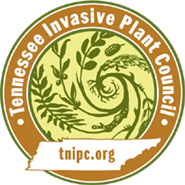Lespedeza cuneata (Dum.-Cours) G. Don
Chinese Lespedeza, Sericea Lespedeza| Threat Level | Category |
|---|---|
| Established | Forb/Herb |
|
Similar Species May be confused with the following native and/or non-native species. Landscape Alternatives lists native horticultural substitutes |
Lespedeza virginica |
|---|

Description
Height
Perennial ascending-to-upright leguminous forb, 3 to 6 feet (1 to 2 m) in height, with one-to-many leafy slender stems arising from a woody rootcrown and often branching at mid-plant. Dormant brown plants remaining upright during most of the winter.Stems
Stems are typically gray green with lines of hairs along the length.Leaves
Three-leaflet leaves are alternate, crowded and numerous. Each leaflet is oblong to linear with a hairlike tip, 0.4 to 0.8 inch (1 to 2 cm) long and 0.1 to 0.3 inch (3 to 8 mm) wide. They are green above and dense whitish hairy to light gray green beneath. Hairy petioles are 0.2 to 0.6 inch (5 to 15 mm) long, absent for upper leaves. Stipules are narrowly linear.Flowers
From July to September, clusters of 1 to 3 pealike flowers crowd the upper leaf axils. Tiny flowers are white with purple marks, 0.1 to 0.3 inch (4 to 7 mm) long and shorter than leaves. Hairy, five-lobed calyx is shorter than the petals.Fruit and Seeds
Flat ovate to round single-seeded legume pods 0.12 to 0.15 inch (3 to 4 mm) wide occur October to March turning from green to tan. Pods are clustered in terminal axils, scattered along the stem, and clasped by persistent sepals.Images
Photo: Dan Tenaglia, Missouriplants.com, Bugwood.orgMore images of Lespedeza cuneata
Life History
Sericea Lespedeza is a perennial, ascending-to-upright leguminous forb, 3 to 6 feet (1 to 2 m) in height, with one-to-many leafy slender stems often branching at mid-plant, three-leaflet leaves, and tiny whitish flowers. Plant arises from a woody rootcrown. Dormant brown plants remain upright during most of the winter. It fixes nitrogen in the soil and is a member of the Fabaceae or Pea family.Ecology and Habitat
Occurs in new and older forest openings, dry upland woodlands to moistsavannas, old fields, right-of-ways, and cities. It is flood tolerant. Sericea Lespedeza forms dense stands by sprouting stems from rootcrowns that prevent forest regeneration and land access. It both cross- and self-pollinates, and spreads slowly from plantings by seeds that have low germination, but remain viable for decades.
Origin and Distribution
Introduced from Japan in 1899, first near Arlington, VA, and soonafterward in north-central Tennessee, where it has escaped. It was actively promoted in government programs for erosion control, and is still planted for quail food plots and soil stabilization. Plant improvement breeding programs are still underway.
Other states where invasive: AR, DC, GA, IN, KY, MD, MO, NC, NJ, NY, VA, WI, WV. Federal or state listed as noxious weed, prohibited, invasive or banned: CO, KS.
Source: Information on this plant page is derived primarily from James H. Miller's Nonnative Invasive Plants of Southern Forests, USDA Forest Service.
Management Recommendations
3. Herbicidal ControlsFoliar Spray Method
Thoroughly wet all leaves with one of the following herbicides in water with a surfactant (July to September): Triclopyr as a 2-percent solution (8 ounces per 3-gallon mix), Escort at three-fourths of an ounce per acre (0.2 dry ounces per 3-gallon mix), Transline†as a 0.2-percent solution (1 ounce per 3-gallon mix), a glyphosate herbicide as a 2-percent solution (8 ounces per 3-gallon mix), or Velpar L as a 2-percent solution (8 ounces per 3-gallon mix).Mowing 1 to 3 months before herbicide applications can assist control.
Seeds of both Lespedeza bicolor and Lespedeza cuneata are long lived in the soil seed bank and require long-term monitoring after control treatments.
Prescribed burning can promote spread of the infestation margins.
Nontarget plants may be killed or injured by root uptake.
†Transline controls a narrow spectrum of plant species.
